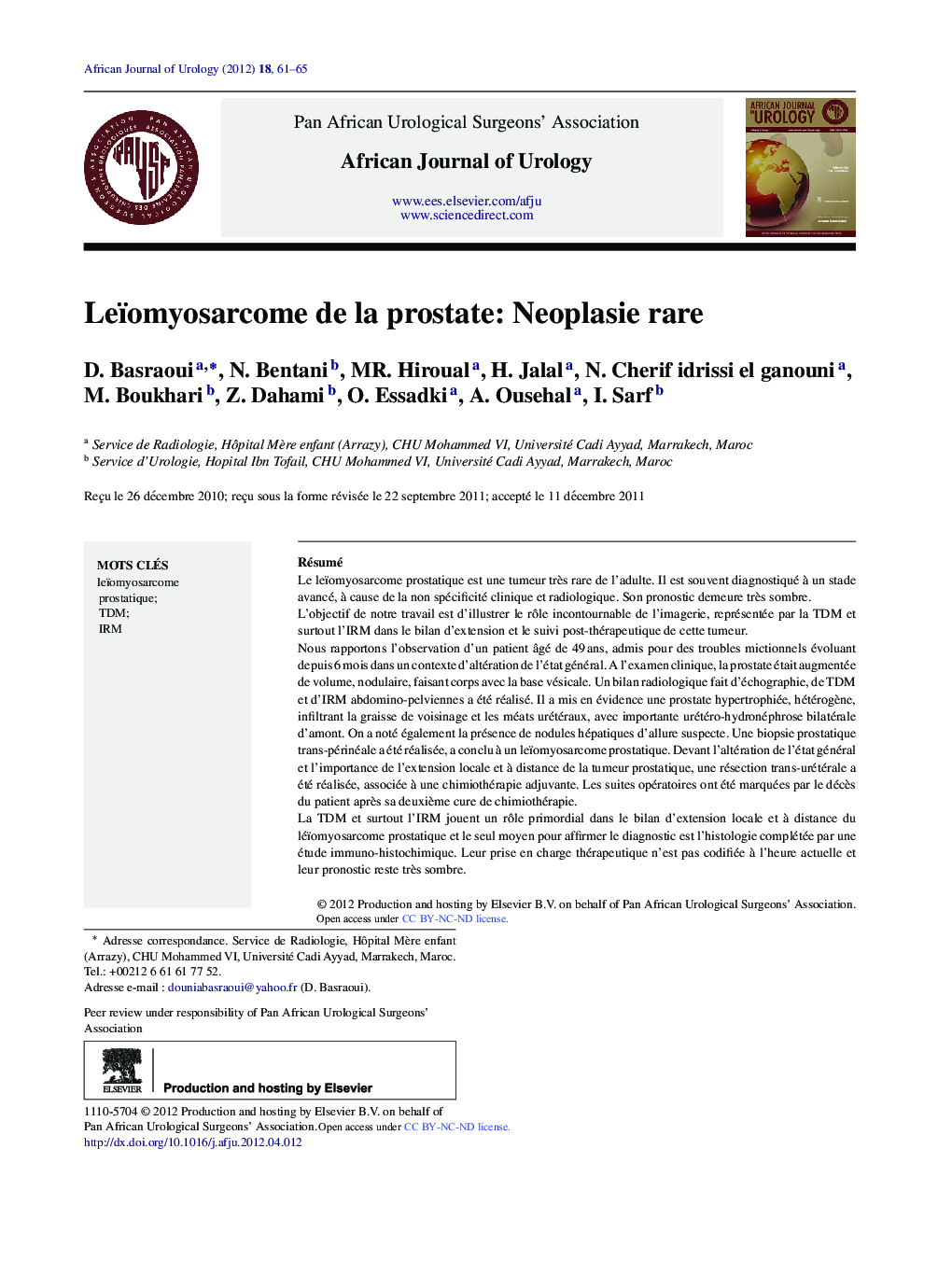| Article ID | Journal | Published Year | Pages | File Type |
|---|---|---|---|---|
| 4267779 | African Journal of Urology | 2012 | 5 Pages |
RésuméLe leïomyosarcome prostatique est une tumeur très rare de l'adulte. Il est souvent diagnostiqué à un stade avancé, à cause de la non spécificité clinique et radiologique. Son pronostic demeure très sombre.L'objectif de notre travail est d'illustrer le rôle incontournable de l'imagerie, représentée par la TDM et surtout l'IRM dans le bilan d'extension et le suivi post-thérapeutique de cette tumeur.Nous rapportons l'observation d'un patient âgé de 49 ans, admis pour des troubles mictionnels évoluant depuis 6 mois dans un contexte d'altération de l’état général. A l'examen clinique, la prostate était augmentée de volume, nodulaire, faisant corps avec la base vésicale. Un bilan radiologique fait d’échographie, de TDM et d'IRM abdomino-pelviennes a été réalisé. Il a mis en évidence une prostate hypertrophiée, hétérogène, infiltrant la graisse de voisinage et les méats urétéraux, avec importante urétéro-hydronéphrose bilatérale d'amont. On a noté également la présence de nodules hépatiques d'allure suspecte. Une biopsie prostatique trans-périnéale a été réalisée, a conclu à un leïomyosarcome prostatique. Devant l'altération de l’état général et l'importance de l'extension locale et à distance de la tumeur prostatique, une résection trans-urétérale a été réalisée, associée à une chimiothérapie adjuvante. Les suites opératoires ont été marquées par le décès du patient après sa deuxième cure de chimiothérapie.La TDM et surtout l'IRM jouent un rôle primordial dans le bilan d'extension locale et à distance du léïomyosarcome prostatique et le seul moyen pour affirmer le diagnostic est l'histologie complétée par une étude immuno-histochimique. Leur prise en charge thérapeutique n'est pas codifiée à l'heure actuelle et leur pronostic reste très sombre.
The prostatic leïomyosarcoma is a very uncommon tumor of the adult. It is often diagnosed to an advanced stage, because of the clinical and radiological non specificity. Its prognosis is very dark.The objective of our study is to illustrate the important role of the imagering, represented by the CT and especially the MRI in the balance of extension and the post-therapeutic follow-up of this tumor.We report a 49 years old patient's observation, allowed for unrests mictionnels evolving since 6 months in a context of change of the general state. To the clinical exam, the prostate was increased of volume and nodular. A radiological balance made of US, CT and abdomino-pelvic MRI has been achieved. It showed an heterogeneous prostate, infiltrating the grease of neighborhood and the ureteral meats, with important bilateral urétéro-hydronephrosis of uphill. One also noted the presence of suspected hepatic nodules. A trans-perineal prostatic biopsy has been achieved, concluded to a prostatic leïomyosarcoma. Because of the bad general state and the importance of the local extension and from afar of the prostatic tumor, a trans-ureteral resection has been achieved, associated to a chemotherapy. The evolving have been marked by the patient's death after his second cure of chemotherapy.The CT and especially the MRI had a primordial role in the balance of local extension and from afar of the prostatic léïomyosarcoma and the only means to affirm the diagnosis is the histology completed by an immuno-histochimical study. Their therapeutic handling is not codified at the present time and their prognosis remained very dark.
